One moment, the valley was a tranquil, swampy wetland. Grasses and palm trees cast fuzzy shadows on the water below. Fish lurked warily at the edges of mangroves. Orangutans sought out fruit with leathery fingers. Then a dormant giant awoke from its sleep.
It was around 72,000 BC on the island of Sumatra, Indonesia. The Toba supervolcano was erupting, in what is thought to have been the greatest such event in the last 100,000 years. A series of thunderous explosions blasted out 9.5 quadrillion kilograms of ash, which billowed out in sky-darkening clouds that crept around 47km (29 miles) into the atmosphere.
In the aftermath, a vast area across Asia was blanketed in a layer of soft dust 3-10cm thick. It choked water sources and stuck to vegetation like cement – deposits from Toba have been found as far away as East Africa, 7,300km (4,536 miles) west of the eruption. But crucially, some scientists believe it plunged the world into a volcanic winter that lasted decades – and nearly made our species extinct.
Back in 1993, a team of American researchers studied the human genome for clues to its deep past, and discovered the tell-tale signature of a major “population bottleneck” – a moment when humanity shrank so drastically, all subsequent generations outside Africa were significantly more closely related.
Later studies have revealed that in this precarious era, which may have occurred between 50,000 and 100,000 years ago, our collective numbers may have hit as few as 10,000 people – equivalent to the current population of the sleepy settlement of Elkhorn in Wisconsin, or the number who attended a single drive-through wedding in Malaysia in 2020. The least affected part of the world was Africa, where genetic diversity remains high to this day – on this single continent, there are larger genetic differences between certain groups than there are between Africans and Europeans.
Some think this timing isn’t a coincidence – they believe it was the Toba volcanic eruption that did it. The idea is hotly disputed, but there’s no doubt that much of humanity is descended from a relatively modest number of super-hardy ancestors. At times, the inhabitants of entire regions of the world have been in great peril.
Fast-forward 74,000 years and our once-obscure species of hairless ape has undergone a population explosion, colonising nearly every habitat on the planet and exerting our influence on even the remotest corners – in 2018, scientists found a plastic bag 10,898m (35,754ft) below the ocean’s surface at the bottom of the Mariana Trench, while another team recently discovered man-made “forever chemicals” on Mount Everest. No part of the world is pristine – every lake, forest and canyon has been touched by human activity.
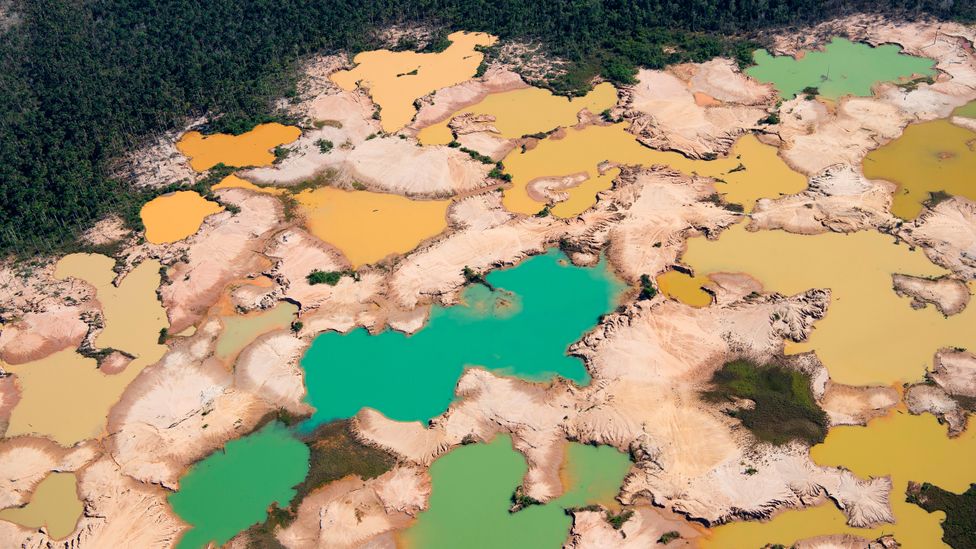
The world’s largest remaining swathes of forest are rapidly disappearing (Credit: Getty Images)
At the same time, our sheer numbers and ingenuity have enabled humanity to achieve feats that no other animal could dream of – splitting atoms, sending complex equipment nearly a million miles (1.6 million km) to observe planets forming in distant galaxies, and contributing to a staggering diversity of art and culture. Every day, we collectively take 4.1 billion photographs and exchange between 80 and 127 trillion words.
On the uncannily specific date of 15 November 2022, the United Nations has predicted that there will be eight billion humans alive at the same time – up to 800,000 times as many as there were survivors of the Toba catastrophe.
Today, our population is so enormous, with such little genetic diversity – outside Africa – one researcher recently observed it’s actually not that surprising that some people look uncannily similar to perfect strangers – there’s a limited gene pool that’s constantly being recycled and around 370,000 new opportunities (in the form of babies born) for these genetic coincidences to occur each day.
But with humanity’s expanding population has come great division. Some view our rising numbers as an unprecedented success story – in fact, there’s an emerging school of thought that we actually need more people. In 2018 the tech billionaire Jeff Bezos predicted a future in which our population will reach a new decimal milestone, in the form of a trillion humans scattered across our Solar System – and announced that he’s planning ways to achieve it.
Others, meanwhile – including the British broadcaster and natural historian Sir David Attenborough – have labelled our swarming masses a “plague on the Earth”. In this view, nearly every environmental problem we’re currently facing, from climate change to biodiversity loss, water stresses and conflicts over land, can be traced back to our rampant reproduction over the last few centuries. Back in 1994 – when the global population was a mere 5.5 billion – a team of researchers from Stanford University, in California, calculated that the ideal size of our species would be between 1.5 and 2 billion people.
So is the world overpopulated currently? And what might the future hold for the global dominance of humanity? The debate over the ideal number of people on the planet is as fractured and emotionally charged as ever – but time is running out to decide which is the best direction.
An ancient concern
It was the late 1980s in central Iraq, and a team of archaeologists from the University of Baghdad were excavating a ruined library in the ancient city of Sippar. Amid the sand, dust, and antique walls, they found 400 clay tablets – records that had been lying forgotten in their scholarly tomb for over three and a half thousand years, still on the same shelves they had once been added to by Babylonian hands.
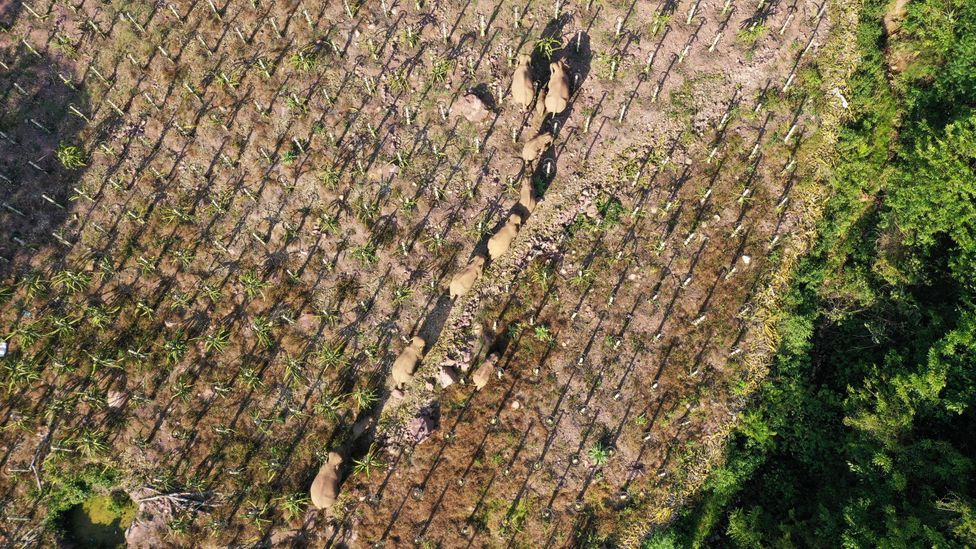
The natural migrations of many animals are now impossible without wandering through human settlements or infrastructure (Credit: Getty Images)
But four in particular were special. They contained missing sections of a story found in fragments on separate tablets scattered across Mesopotamia, which is still intriguing historians today.
“Twelve hundred years had not yet passed [since the creation of mankind], When the land extended and the people multiplied…” goes the Atra-hasis – the epic poem stamped into the clay by an anonymous scribe around the 17th Century BC. It’s the Mesopotamian version of the ubiquitous Great Flood story, found in countless forms in cultures across the globe, in which civilisation is destroyed by a deity – and it might contain one of the earliest mentions of overpopulation in the historical record.
In the ancient tale, the gods become annoyed at all the “noise” and “uproar” created by the human hordes, as well as the “lands bellowing like a bull” due to the stresses they were put under by our species’ demands. The god of the atmosphere, Enlil, decides to unleash a few hazards to bring numbers down again – contriving plagues, famines and droughts to arrive at regular intervals of 1,200 years. Fortunately, another god saves the day – this time. But then Enlil plans a great flood instead… and the classic tale of boat-building ensues.
Around the time the Atra-hasis was written, the global population is estimated to have been between 27 and 50 million people, equivalent to the number who currently inhabit Cameroon or South Korea, or 0.3-0.6% of the total who call the planet home today.
During the millennium that followed, scholars appear to have fallen relatively quiet about any population concerns. Then in Ancient Greece, they began to ponder the issue again.
The philosopher Plato had some strong views. After a period of rapid growth, in which Athens’ population doubled, he lamented: “What is left now is like the skeleton of a body wasted by disease; the rich soil has been carried off and only the bare framework of the district is left.” Not only did he believe in strict population control, managed by the state – he eventually concluded that the ideal city should have no more than 5,040 citizens, and thought setting up colonies was a good way of offloading any excess – but he also felt the importance of moderating consumption.

It can be hard to grasp the staggering scale of the human population (Credit: Getty Images)
In Plato’s magnum opus, The Republic, written around 375BC, he describes two imaginary city-states – administrative regions governed almost like small countries. One is healthy and one is “luxurious” and “feverish”. In the latter, the population spends and devours excessively, surrendering themselves to consumerism until they have “overstepped the limit of their necessities”. Alas, this morally decrepit city-state eventually resorts to seizing neighbouring lands, which naturally spirals into war – it simply can’t sustain its large, greedy population without extra resources.
Plato had hit upon a debate that’s still raging today: is the human population the issue, or is it the resources it consumes?
It took more than five centuries after Plato before the global scale of our population explosion became clear. The author Tertullian, who lived in the Roman city of Carthage, pre-empted modern-day observations about our destructive multitudes by a long shot. In 200AD, when the total human population had reached 190-256 million – somewhere around the number who currently inhabit Nigeria or Indonesia – he believed that the whole world had already been explored, and people had become a burden on the planet. “..for nature can no longer sustain us”.
Over the next 1,500 years, the global human population more than tripled. Eventually, this detached concern turned to panic.
Enter Thomas Malthus, an English cleric with a penchant for pessimism. In his famous work, An Essay on the Principle of Population, published in 1798, he began with two important observations – that all people need to eat, and they like to have sex. When taken to their logical conclusion, he explained, these simple facts would eventually lead humanity’s demands to outstrip the planet’s supplies.
“Population, when unchecked, increases in a geometrical ratio. Subsistence increases only in an arithmetical ratio. A slight acquaintance with numbers will show the immensity of the first power in comparison of the second,” wrote Malthus. In other words, large numbers of people lead to even larger numbers of offspring, in a kind of positive feedback loop – but our ability to produce food doesn’t necessarily accelerate in the same way.
These simple words had an immediate effect, igniting passionate fear in some and anger in others, which would continue to reverberate across society for decades. The former thought that something had to be done to stop our numbers spiralling out of control. The latter, that limiting the number of people was absurd or unethical, and every effort should be made to increase the food supply instead.
The fewer-people camp were particularly critical of the English Poor Laws introduced hundreds of years earlier, which involved payments to those living in poverty to help them care for their children. It was speculated that these encouraged people to have larger families.
At the time Malthus’ essay was published, there were 800 million people on the planet.

There is unprecedented global demand for the products of mining, but the industry can have devestating consequences for the environment (Credit: Alamy)
It wasn’t until 1968, however, that modern concerns about global overpopulation emerged when a professor at Stanford University, Paul Ehrlich, and his wife, Anne Ehrlich, co-authored The Population Bomb. The Indian city of Delhi was the inspiration. They were returning to their hotel in a taxi one evening and went through a slum, where they were overwhelmed by the amount of human activity on the streets. They wrote about the experience in a way that has been heavily criticised – especially since London’s population at the time was more than double Delhi’s.
The couple authored their book because of concerns about the mass starvation that they believed was coming, particularly to those in developing countries – but also in places like America, where people were starting to notice the impact they were having on the environment. The work has been widely credited with – or accused of, depending on your view – triggering many of the current anxieties about overpopulation.
Of course, discussions about how many people there should be have never been purely academic. At times, they have been hijacked to justify persecution, ethnic cleansing and genocide. In each case, the perpetrators have been intent on lessening the populations of specific groups of people, such as those from a certain social class, religion or ethnicity – rather than humanity as a whole – but they are nevertheless sometimes seen as examples of the dangers that the very concept of overpopulation can pose.
As early as 1834, just three and a half decades after Malthus’ essay was published, the English Poor Laws were scrapped and replaced with stricter ones. This was partly over Malthusian concerns that this social class (who he called “peasants”) were reproducing too much, and had the result of forcing orphaned children into bleak, unsanitary workhouses like the one depicted in Charles Dickens’ novel Oliver Twist.
Over the coming centuries, eugenics was continually disguised as population control – or received support from the movement – such as during the forced sterilisations of people from minority ethnic groups in 1970s America. It was also used to curtail individual freedoms. In 1980, China introduced its controversial one-child policy, which was widely seen as an invasive violation of the population’s sexual and reproductive rights.
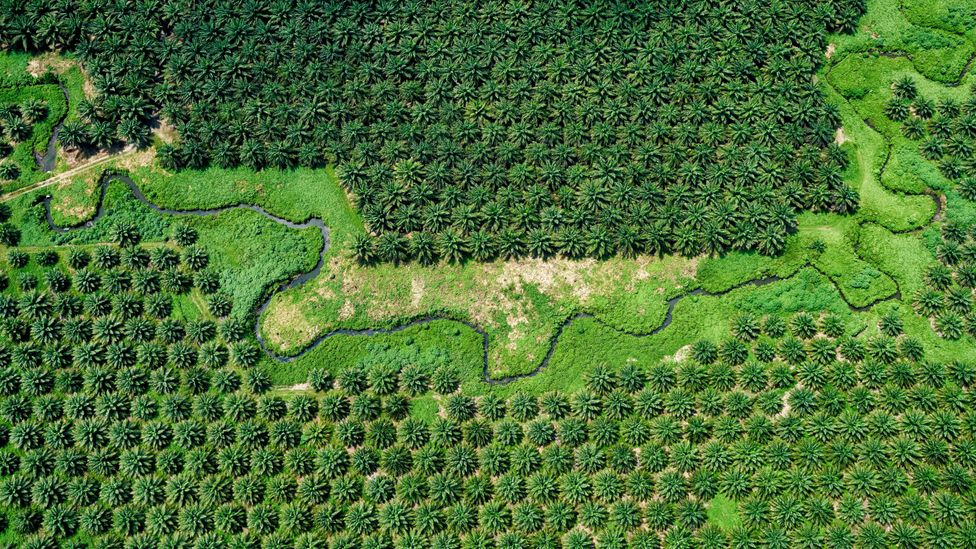
The first oil palm tree was planted in Malaysia in 1870. Today the plants cover around 5.9 million hectares (22,780 square miles) of land in the country (Credit: Alamy)
A contentious future
As a result of its controversial history, population engineering is a deeply divisive area.
Today, any policies involving quotas or targets to increase or decrease the human population are almost universally condemned, except by a handful of extremist organisations. The risk of these incentives leading to coercion or other atrocities is seen as too great. But there is little agreement beyond this.
At one end of the spectrum lie those who see lower fertility rates in some areas as a crisis. One demographer is so concerned by the localised drop in the birth rate in the UK that he has suggested taxing the childless. As of 2019, there were 1.65 children born in the country per woman on average. This is below the replacement level – the number of births required to maintain the same population size – of 2.075, though the population was still growing overall because of migration from other countries.
The opposing view is that slowing and eventually halting global population growth is not only eminently manageable and desirable, but it can be achieved via entirely voluntary means – methods such as simply providing contraception to those who would like it, and educating women. In this way, proponents of this position believe we could not only benefit the planet but improve the quality of life experienced by the poorest citizens worldwide.
One organisation that believes in this approach is the UK-based charity Population Matters, which campaigns to achieve a sustainable global population. They advocate for addressing the pressures consumerism – particularly by the developed world – is placing on the planet, while also highlighting the role that population size has to play in this. “We deplore any form of population control or coercion, restriction of choice,” says the director, Robin Maynard. “So, it’s about enabling access, enabling choice, and meeting rights. And that is actually the most effective way that people will make decisions which are good for them and good for the planet, ultimately.”
On the other hand, others advocate for shifting the focus away from adjusting the number of people in the world, however softly or indirectly this is achieved, to our activities. Supporters argue that the quantity of resources each person uses up has more of an impact on our collective influence, and point out that consumption is significantly higher in wealthier countries with lower birth rates. Reducing our individual demands on the planet could shrink humanity’s footprint without stifling growth in poorer countries.
In fact, Western interest in curtailing population growth in less developed parts of the world has been accused of having racist undertones, when Europe and North America are more densely populated overall.
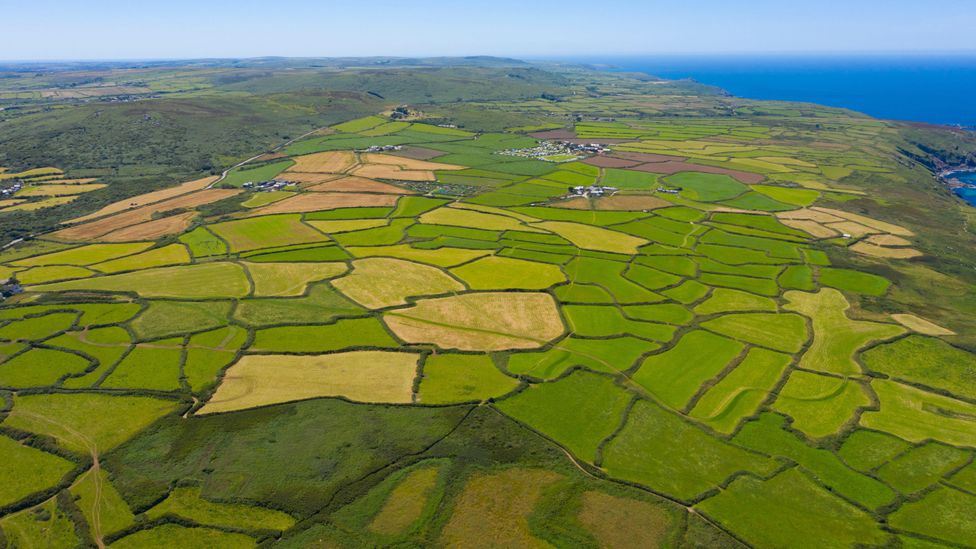
After the last Ice Age, Britain was cloaked in dense forest – the wildwood. But after thousands of years of settlement, today they cover just 13% of the land (Credit: Alamy)
Finally, there’s the fatalistic “solution” to the perennial population question: simply do nothing. This view relies on the highly unstable dynamics of our global population – it’s set to grow significantly, but then it will shrink. Every camp may get what they want in the end, though not forever.
Estimates vary, but we’re expected to reach “peak human” around 2070 or 2080, at which point there will be between 9.4 billion and 10.4 billion people on the planet. It may be a slow process – if we reach 10.4 billion, the UN expects the population to remain at this level for two decades – but eventually after this the population is projected to decline.
In the book “Empty Planet: The Shock of Global Population Decline”, the authors present a very different vision of the future to the one we’re used to, in which the world grapples with the new challenges and opportunities that depopulation could present.
Amid all the controversy and uncertainty, it can be hard to know what to think. Here’s how the number of people on the planet might affect a few key aspects of our lives in the future – the environment, economy, and our collective wellbeing.
An environmental challenge
With bumpy handheld shots, the camera stalks through the Madagascan forest. It’s thick with trees and the thrilling mystery of an unknown wilderness. Then suddenly, there it is: a white blur bounces across the frame and off into the distance. The animal is a sifaka – a shy and elusive lemur with long limbs, pale fur and a black face, like a lanky teddy bear.
The brief encounter is part of a BBC documentary, Indian Ocean with Simon Reeve, and the presenter soon reveals a startling caveat to the team’s lucky find. This is not the wild after all – it’s the Berenty reserve in Southern Madagascar, a tiny patch of forest surrounded on all sides by commercial plantations, and one of the last remaining places this rare creature calls home.
At the visitor centre, Reeve says he’s been reliably informed that nearly all wildlife camerapeople who film in the area set their equipment up in this exact location, where the lemurs are most abundant, facing away into the forest so as not to capture any buildings. While viewers may think they’re catching a glimpse into the wild unknown, you could argue that what they’re really getting is a carefully curated illusion of untamed nature.
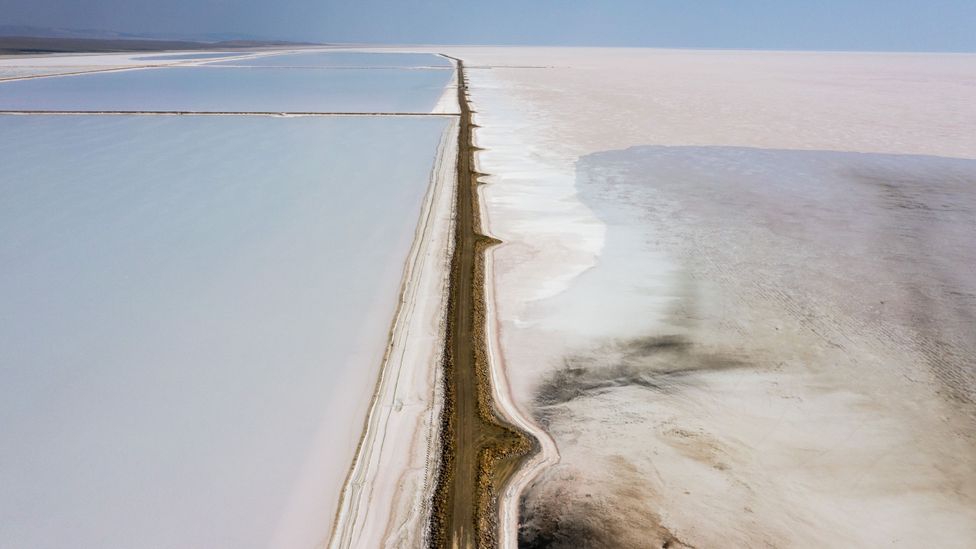
As humanity’s population has grown, its demand for water has increased in step – and now previously-vast lakes are beginning to vanish (Credit: Getty Images)
The documentary highlights the “wilderness myth” – a misunderstanding that can occur when people are presented with majestic footage of the natural world that excludes humans entirely, or drastically downplays our ubiquity, suggesting that there are still vast tracts of untouched land out there.
Satellite images are a particularly powerful tool for shattering this notion: from the air, many countries are revealed to be heavily adapted for human use. As far as the eye can see, the land is a patchwork of agricultural fields, threaded with roads and row upon row of buildings. Some landscapes have been so transformed in just a few decades, by engineering works or deforestation, that they are barely recognisable.
These changes come with some startling statistics. According to the UN Food and Agriculture Organization (FAO), 38% of the planet’s land surface is used to grow food and other products (such as fuel) for humans or their livestock – five billion hectares (12.4 billion acres) in total.
And though our ancestors lived among giants, hunting mammoths, mega-wombats and 450kg (1,000lb) elephant birds, today we are the dominant vertebrate species on land – a grouping that includes everything from geckos to lemurs. By weight, humans account for 32% of terrestrial vertebrates, while wild animals amount to just 1% of the total. Livestock accounts for the rest.
The wilderness-preservation charity WWF has found that wildlife populations declined by two thirds between 1970 and 2020 – in that time, the global population more than doubled.
In fact, as our dominance increases, many environmental changes have been occurring in parallel – and a number of prominent environmentalists, from the primatologist Jane Goodall, famous for her study of chimpanzees, to the naturalist and tv presenter Chris Packham, have voiced their concerns. In 2013, Sir David Attenborough explained his views in an interview with the Radio Times: “All our environmental problems become easier to solve with fewer people, and harder – and ultimately impossible – to solve with ever more people.”
For some people, alarm over humanity’s environmental footprint has led them to decide to have fewer or no children themselves – including The Duke and Duchess of Sussex, who announced in 2019 that they would have no more than two for the sake of the planet. In the same year, Miley Cyrus also declared that she wouldn’t have children yet because the Earth is “angry”.
A growing number of women are joining the anti-natalist movement and going on “BirthStrike”, until the current climate emergency and extinction crisis are dealt with. The trend was buoyed up by research from 2017, which calculated that simply having one fewer child in the developed world could reduce a person’s annual carbon emissions by 58.6 tonnes of “CO2 equivalent” or CO2e – more than 24 times the savings from not having a car.

The world’s coastlines are among the most densely populated areas on the planet (Credit: Alamy)
One 2019 study, led by Jennifer Sciubba, an associate professor of International Studies at Rhodes College, Tennessee, analysed the levels of population growth in over 1,000 regions in 22 European countries between 1990 and 2006, and compared them to how patterns of urban land use and carbon dioxide emissions changed over the same period. The team concluded that the sheer number of people had a “considerable effect” on these environmental parameters in Western Europe, but these were not the most important factors in Eastern Europe.
This nuanced support for the idea that population growth leads to environmental degradation is backed up by many other studies – but so is the impact of spiralling demand for natural resources, especially in wealthier countries. In fact, many environmentalists now believe that the problems we’re currently facing are largely due to consumption, rather than overpopulation – from this perspective, concerns about the latter unfairly shift the blame onto poorer countries.
In 2021, a study found that in the US, population growth and the use of non-renewable energy sources are both degrading the environment, while another found that economic growth and the use of natural resources in China from 1980 to 2017 led to higher carbon dioxide emissions.
Intriguingly, other research has found that, while the use of natural resources and urbanisation in China both increase the rate of environmental destruction, these are partly offset by the availability of “human capital” – essentially, the knowledge and skill of the human population.
Today it is widely accepted that people are putting an unsustainable strain on the world’s finite resources – a phenomenon that’s highlighted by “Earth overshoot day”, the date each year when humanity is estimated to have used up all the biological resources that the planet can sustainably regenerate. In 2010, it fell on August 8. This year, it was 28 July.
Whether the problem is too many humans, the resources we use up, or both, “I can’t even fathom how more humans could be better for the environment”, says Sciubba, who authored the book “8 Billion and Counting: How Sex, Death, and Migration Shape our World”. She suggests one way to make the case might be to view humans and the environment as the same entity, “but boy, that that’s a real hard argument to make”.

As land becomes more valuable than ever, some parts of the world are becoming uninhabitable (Credit: Alamy)
However, Sciubba is keen to point out that the idea of an impending “population bomb” coming to destroy the planet, as suggested by the Ehrlichs’ book, is outdated. “At that time [when it was written], I think there were 127 countries in the world where women on average had five or more children in their lifetime,” she says. In that era, population trends really did look as though they were exponential – and she suggests that this instilled a population panic in certain generations that are still alive today.
“But today there are only 8 [countries with fertility rates above five],” says Sciubba. “So I think it’s important for us to realise that those trends changed.”
An economic opportunity
In 2012, the Singaporean government devised an unusual way for citizens to celebrate its independence – and disseminated the important instructions via a new rap song. The hit was intended to encourage young couples to have more children, and mixed colourful innuendos with patriotic references to the culture and sights the country has on offer.
“…Let’s make a lil’ human that looks like you and me, Explorin’ your body like a night safari, I’m a patriotic husband you a patriotic wife, Let me come into your camp and manufacture a life…,” went some of the lyrics.
It was released amid fears about Singapore’s super-low fertility rate, which was just 1.1 births per woman as of 2020. It’s an extreme example of what has become a common trend in wealthy countries, where people marry later and choose to have fewer children. In Singapore it triggered concerns about what the consequences might be for the nation’s economy, leading the government there to call on its citizens to do their bit.
It’s a key concept in economics: the more people you have, the more goods or services they can produce and the more they can consume – so population growth is the best friend of economic growth.
This is one reason that concerns about the growing population in developing parts of the world is sometimes seen as problematic – many developed countries are already densely populated, and this is partly how they achieved their wealth. Denying other countries this opportunity is seen as unfair and even racist.

Human expansion means cultural and religious events are bigger than ever – now 2.5 million Muslims attend the Hajj pilgrimmage each year (Credit: Getty Images)
However, slower population growth isn’t always followed by an economic downfall. Take Japan, which pre-empted global trends in wealthy nations and achieved below-replacement level fertility rates as early as 1966, when it suddenly dropped from around two to 1.6. “I don’t think it’s the case that Japan’s economy has declined to the extent that people sometimes portray it, if you look at standards of living,” says Andrew Mason, emeritus professor in the department of economics at the University of Hawaii. “They’ve invested a lot in human capital – so they have fewer children, but they’ve emphasised education and have very good healthcare systems.”
Mason also points out that saving and investment are also common in Japan: “So there’s been increases in [monetary] capital and higher productivity as well. If you combine those things… I think Japan is a good case study in why not to panic [about declining birth rates].”
And there are other ways of growing a country’s economy. Mason points out that immigration often provides a helpful source of new workers, and it does so without adding any extra people to humanity’s total. But immigration also remains a contentious and highly politicised subject in some counties, so without cultural shifts in how it’s perceived, some countries won’t have this option.
“Think particularly of countries like Japan and South Korea where they have [historically] been very resistant to immigration, they’re going to find it more and more to their advantage [to change this policy],” says Mason.
Equally, the advantages that immigration can provide are inherently highly uneven – one country gets a boost to its economy at the expense of another whose workers left.
There’s a growing feeling that the global obsession with chasing economic growth at all costs is outdated and should be abandoned altogether. “One of the things that frustrates me about the overpopulation debate is a lot of comments come out of the same people’s mouths – that we don’t want there to be too many people, and we also want to make sure that the economy is always growing,” says Sciubba. “In a world where there are fewer people, we really need a complete mindset shift away from growth equals progress,” she says.
A happier future
However, demographics influence more than just the environment and economy – they’re also a powerful hidden force in shaping the quality of people’s lives worldwide.
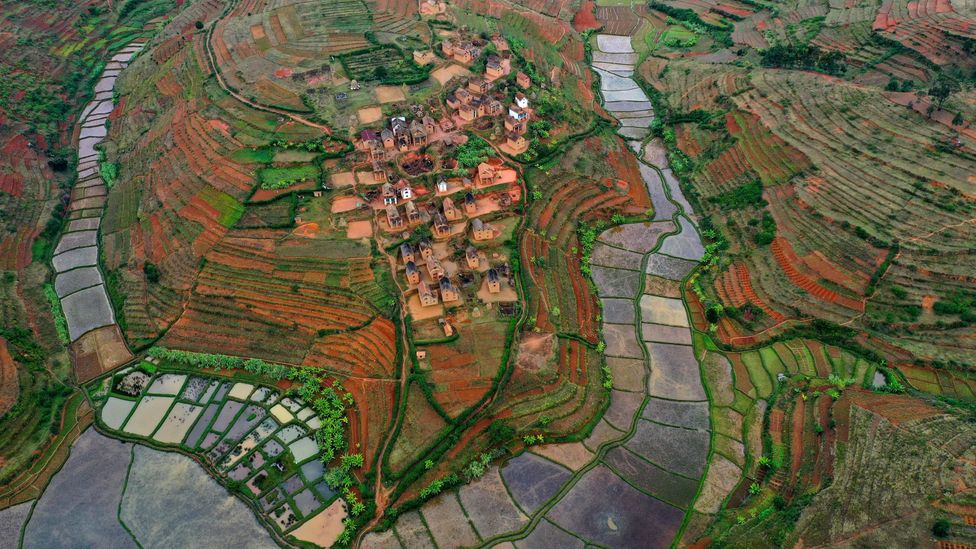
Humans are masters of trasforming landscapes to suit their own needs (Credit: Getty Images)
According to Alex Ezeh, a professor of Global Health at Drexel University, Pennsylvania, the absolute number of people in a country is not the most important factor. Instead it’s the rate of its population’s growth or decline that is key to a country’s future prospects – this determines how quickly things are changing.
Take Africa, where Ezeh explains that there are radically different rates of population growth currently occurring, depending on where you look.
“In a number of countries, particularly in Southern Africa [one of five regions defined by the United Nations], fertility rates have really dropped and contraceptive use is up – the rate of growth of the population slowing down, which is in some ways good news,” says Ezeh.
At the same time, some Central African countries still have high rates of population growth, as a result of high fertility and longer lifespans. In some places, it’s well above 2.5% per annum, “which is massive,” says Ezeh. The population will double every 20-plus years in a number of countries.”
Even within a single region, different countries can be on surprisingly different paths – Ezeh gives the example of the East African neighbours Burundi and Rwanda. While the former still has high levels of growth – at 5.3 births per woman – in the latter growth is slowing down, with 3.9 births per woman in 2020 compared to 4.5 in 2010.
“I think the conversation about size and numbers is a misplaced conversation”, says Ezeh. “Think of a city that is doubling every 10 years – and that’s a number of cities in Africa – which government really has the resources to improve every infrastructure that currently exists every 10 years, in order to maintain the correct level of coverage of those services?”
Ezeh explains that in particular, it’s difficult to support the development of human capital under conditions of extreme growth – which research has found plays an important role in the happiness of people in cities, even more than the amount of money they’re earning. It’s also thought to be an important predictor of economic growth, in addition to the sheer number of people in a country.
“When economists think about it, a large population is great for many different outcomes, but do you achieve that large population in 10 years or 100 years or 1,000 years? The longer it takes to get there, you can put in place the right structures in the system that will support that population,” says Ezeh.
One factor with a well-documented role in slowing down this rate of growth is the education of women, which has the side-effect of increasing the average age at which they give birth. “Over time, women get access to education, they have positions outside the family, jobs, all of those that compete with childbearing,” says Ezeh.
However, Ezeh is keen to emphasise the merits of education independent from their impact on population size – it’s one of the UN’s 17 sustainable development goals. This gets to the heart of one modern view on population engineering – policies should be implemented for the benefit of society, and if they happen to lead to beneficial demographic changes, that’s just a bonus.
“I think one of the things we don’t want to do is to instrumentalise female education and make it that we want them to go to school because we want women to have fewer children… there are a lot of positives that we cannot minimise by thinking about it in terms of fertility reduction,” says Ezeh.
In fact, the cascading side-effects of policies implemented for other reasons highlight a striking reality of population science – just how imprecise its predictions often are. Across the globe, the decisions made by governments over the coming decades will be hugely influential in determining how many people there are on the planet – with the power to bump us from a future in which there are 10 billion people, to one in which there are 15 billion, and vice versa.

Today 38% of Earth’s land surface is used to grow food or other products for humans (Credit: Getty Images)
“I think one of the things we know for sure, is… [when people say that] the population of Africa is projected to be x in year y, [it] is not a destiny,” says Ezeh. “If you look at the Southern Africa region… its population could be three to four times larger than what it is today by 2100, but it could also be less than 50% larger than what it is today by 2100. It’s such a large range of possibilities – whether we make the necessary investments to get to the rate of growth that is consistent with where countries want to go. So that is the magnitude of the opportunity that exists.”
An expanding presence
However, though the degree to which humanity will continue to expand across the planet is still to be decided, some trajectories have already been set. And one is that the human population is likely to continue to grow for some time, regardless of any possible efforts to decrease it.
This future is down to a phenomenon known as “demographic momentum“, in which a young population with a fertility rate below replacement level will continue to grow, as long as the death rate and migration levels remain the same. This is because population change isn’t just about birth rates – the structure of a population also has an impact, particularly the total number of women at childbearing age. All this means that in countries where fertility rates are high, the full impact of this growth isn’t felt until the women in that population reach reproductive age decades later.
One 2014 study found that, even in the event of a major global tragedy such as a deadly pandemic or catastrophic world-war, or draconian one-child policy implemented in every country on the planet – none of which anyone is hoping for, of course – our population will still grow to up to 10 billion people by 2100. Even a disaster on such a scale that it leaves two billion people dead within a five-year-period in the middle of the century would still see the population grow 8.5 billion people by 2100. Whatever happens, the authors conclude, there are likely to be many, many people around until at least the next century.
With humanity set to become even more dominant in the years to come, finding a way to live together and protect the environment could be our species’ greatest challenge yet.
BBC
 Home Of Ghana News Ghana News, Entertainment And More
Home Of Ghana News Ghana News, Entertainment And More





